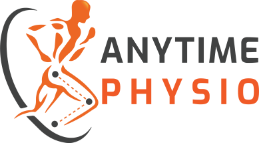Muscle strain or tear
Muscles are strained or torn when some or all the fibres are unable to cope with the force. Muscle injuries commonly occur in sports. This can affect muscles such as the quadriceps, hamstrings, calves (gastrocnemius or soleus) or the rotator cuffs. Muscles are more prone to tears from training error, sudden acceleration or deceleration. Risk factors involve insufficient warm-up, inadequate rest periods, muscle or joint tightness, muscle weakness or previous injury.
Grades of muscle strain or tear
Grade I – The strain of a small number of muscle fibres, causing pain and minimal decrease in range of motion but usually no loss of strength. Recovery usually take 2-3 weeks. Grade II – a large number of muscle fibres are torn but not completely ruptured. This causes pain and swelling and a loss of range of motion and strength. Partial tears may require 2-3 months before returning to sports. Grade III – complete tear of muscle fibres or tendon causing severe pain, swelling, loss of strength and range of motion. Full rupture may require surgery to reattach the fibres. These injuries can take more than 3 months to heal.
Treatment of muscle strain/tear
Acute management of muscle strains or tears is similar to ligament strains treatment. This involves RICE (rest, ice, compression and elevation) and nonsteroidal anti-inflammatory drugs such as ibuprofen. We may recommend a short period of immobilisation, depending on the severity of the injury. An ultrasound or MRI can be helpful in differentiating the grade of the muscle injury.
What is muscle contusion?
The cause of muscle contusion is commonly a direct blow or collision in sports, resulting in localised muscle injury and bleeding. Symptoms can involve pain, swelling, bruising or a lump over the skin called haematoma (pool of blood within injured tissue). This may be related with bone fractures and dislocations in severe cases. Acute management also involves the RICE protocol for 48-72 hours followed by heat. See your doctor or physiotherapist to determine the severity of the injury. You may need an X-ray, ultrasound or an MRI. Contusions usually heal fast. Rehabilitation will be required to to restore pain-free range of motion, strength and flexibility. This will allow a return to sport.
https://www.healthdirect.gov.au/sprains-and-strains
https://www.betterhealth.vic.gov.au/health/ConditionsAndTreatments/ankle-sprains
https://www.worksafe.qld.gov.au/news/2017/the-link-between-stress-and-muscle-strain
http://nps.org.au/consumers/acute-knee-injuries-explained
https://mydr.com.au/pharmacy-care/strains-and-sprains-self-care

